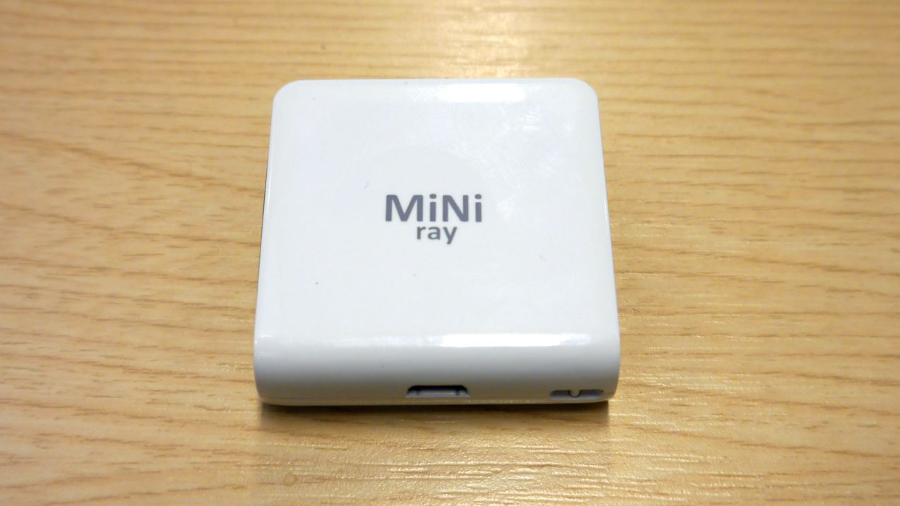Early Verdict
An exciting gadget that could be the future of projection – but it has drawbacks, and right now it's tricky to see a use case for the device.
Pros
- +
Decent image quality even in daylight
- +
Easy to use
- +
Tiny size
Cons
- -
Not cheap
- -
No audio
- -
Low resolution
- -
Requires software installation
Why you can trust TechRadar
Projectors. The very name recalls memories of boring, long presentations in stuffy dark rooms, with everyone trying to hear the voice of the presenter over the noise of the fans of said projector.
Things have changed since those days, though. And they've changed a great deal thankfully. DLP (Digital Light Processing), developed by US-based Texas Instruments in the late 1980s, got rid of the bulky lamps usually associated with projectors and removed the need for cooling fans.

Doing so kick-started a virtuous cycle: less energy consumed meant better reliability, smaller, more power-efficient units, and these cost far less to acquire and to maintain.
The MiNi Ray we're previewing today is DLP at its very best – and we are speaking objectively rather than subjectively here. This is the smallest commercially available projector on the market, one that comfortably fits in your front jeans pocket and is powered by USB.
Yes, it derives its power from the microUSB port of your device thanks to a USB-to-microUSB cable converter – but be aware that the cable only works in one direction.

It barely warms up when used and displays a reasonably good picture for its size. More importantly perhaps, it showcases what the future of projection could, literally, look like.
Despite the current major enthusiasm for virtual reality, projectors and displays still have a bright future (pun intended), at least for another generation.
Sign up to the TechRadar Pro newsletter to get all the top news, opinion, features and guidance your business needs to succeed!
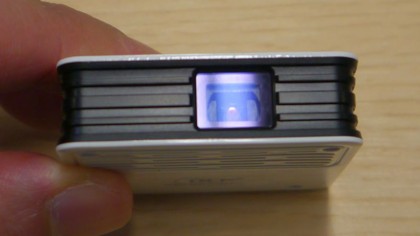
The MiNi Ray could be mistaken for a small chocolate square. It looks like one, albeit slightly bigger. At 44 x 44 x 14mm and weighing 27 grams, it can be moved around effortlessly (just make sure you remember where you left it).
It is so small that the manufacturer saw fit to include a keyring holder! Another plus point is that its usage didn't impact much on our smartphone's battery life during the hands-on. It uses a mere 400mA which translates into a power consumption of 2W.
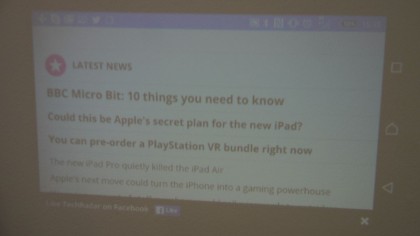
Inevitably, with this being such a small device, a few compromises have been made: it will need an external power source to work, it doesn't come with a practical stand (the one supplied relies on adhesive pads to stick), it doesn't do audio and at 640 x 360 pixels (a 16:9 aspect ratio), its resolution is paltry.
Add in the need for a white, flat and smooth surface in order to work optimally, along with the need to initially install a driver (Displaylink) or an app in order to make the whole thing work, and you might feel slightly deflated.
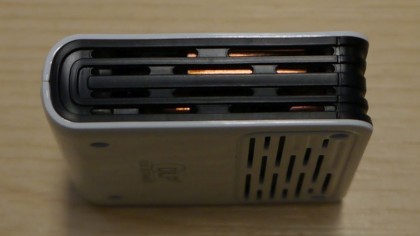
But don't get us wrong. This may well be the future of projection if you manage to find a use case for it. But as much as we are excited about the technology, we failed to see a business case for it.
Organisations that need a decent projector will buy a bigger one that can do at least 720p, if not full HD. Otherwise, the falling price of large television sets that can double as monitors mean that more are moving towards setting up a 60-inch behemoth in the meeting room. And at least television sets don't require you to turn off the lights or draw the curtains, and they work out of the box thanks to industry standard HDMI ports.

I did enjoy my encounter with the MiNi Ray though. It was intuitive enough to be used as a personal projection unit. There's no focusing ring, only two buttons to fulfil that feature. There's no power button as well; just disconnect the USB cable when you're done.
The unit is rated with a maximum brightness of 45 Lumens, a recommended maximum projection screen size of 60-inches and a contrast ratio of 1000:1. The LED has a rated lifetime of 20,000 hours which should be plenty.
The image quality is decent even in broad daylight and surprisingly good in complete darkness. We didn't notice any rainbow effect and as expected, the pictures were a tad soft on the edges.
The manufacturer of the MiNi Ray said that it is working on other devices, which may or may not include the DLP projector technology.
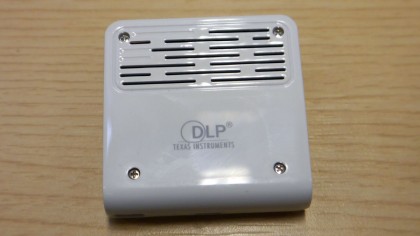
Extreme integration may be where the market is. One can easily envisage shoving the MiNi Ray into a laptop or a keyboard PC like the K3 to get a standalone PC unit.
Or maybe integrate it in a smartphone battery case like Apple's very own iPhone smart battery case, or even stick it on the top of something like the BB8 to get the ultimate cool toy for Christmas.
Early verdict
With an RRP of £156 (around $220, or AU$290) at Inspiredtech, this is definitely not an impulse buy although we expect the price to fall as more competitors – using TI's new breed of DLP technology – come to market.
Right now, only Aiptek and Philips provide some competition, both of them operating out of the box without the need for software installation.
We don't think that it is worth adding more features to the MiNi Ray. Wi-Fi, a speaker, an extra battery or a microSD card reader would just add more unjustified complexity (and expense) to a simple product.

Désiré has been musing and writing about technology during a career spanning four decades. He dabbled in website builders and web hosting when DHTML and frames were in vogue and started narrating about the impact of technology on society just before the start of the Y2K hysteria at the turn of the last millennium.
What is a hands on review?
Hands on reviews' are a journalist's first impressions of a piece of kit based on spending some time with it. It may be just a few moments, or a few hours. The important thing is we have been able to play with it ourselves and can give you some sense of what it's like to use, even if it's only an embryonic view. For more information, see TechRadar's Reviews Guarantee.
